
https://www.youtube.com/watch?v=3bjjKwZRkWg
Dozens reported killed in Gaza refugee camp blast – BBC News
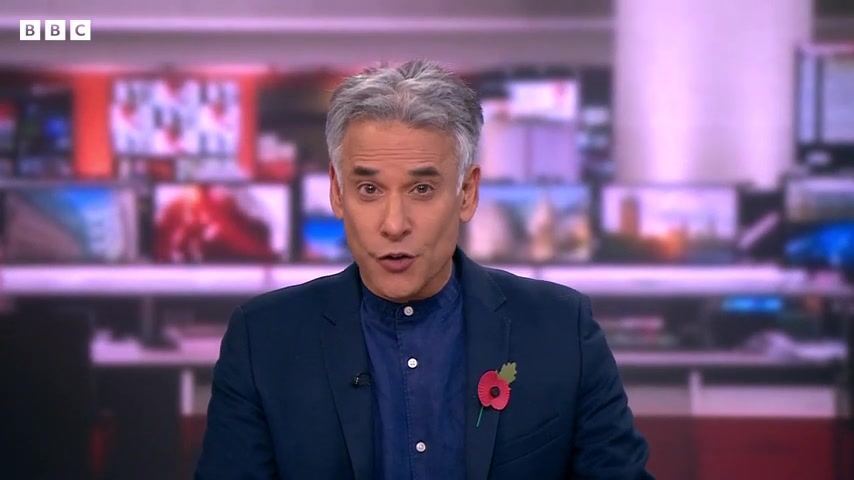
At least 50 people are said to have been killed and many more injured in a blast at the Jabaliya refugee camp in northern Gaza .
Those figures come from the Hamas run Gaza Health Ministry , which also says the camp came under Israeli fire .
We're yet to hear from the Israeli military .
The BBC is still establishing the details .
Pictures from the scene , as you can see , show people searching for survivors and pulling bodies from the rubble .
Israel earlier said its forces are striking targets in all parts of Gaza , with fierce battles being reported with Hamas .
Let me show you these pictures from Israel's defence forces showing their troops carrying out ground operations .
The says it has encountered anti tank missiles and machine gun fire as they advance into Gaza .
A spokesman said it was hunting commanders of Hamas and attacking infrastructure .
Meanwhile , this video was released by Hamas .
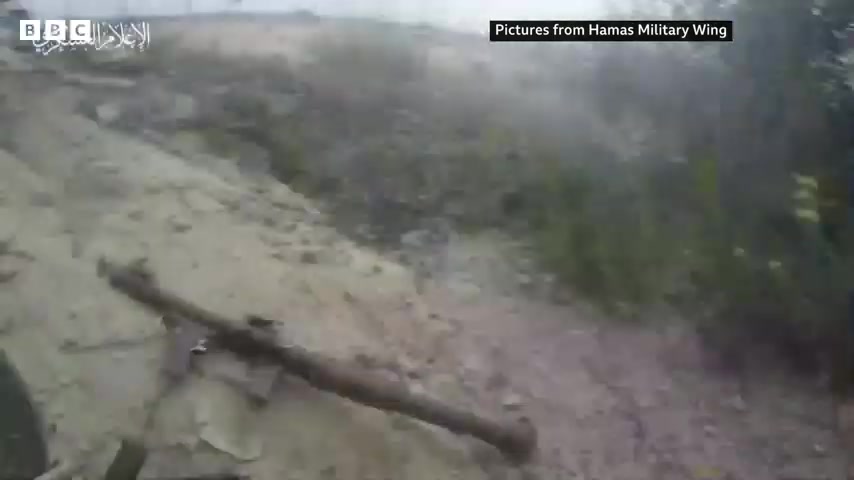
They say that the people you can see surrounded by tanks are in a firefight with Israeli soldiers in northern Gaza over the weekend .
The Palestinian Red Crescent says the area around the al Quds Hospital in Gaza City has again been under heavy bombardment .
The Health Ministry says More than 8.5 1000 people have been killed in the past three weeks .
Israel says over 1400 Israelis were killed in the Hamas attacks on October 7th .
Well , let's go straight to our diplomatic correspondent , Paul Adams , who's in Jerusalem and Paul .
What more can you tell us about the blast at the Jabalia camp ?
Well , Matthew , I think you've shown some of the pictures .
They are pretty shocking .
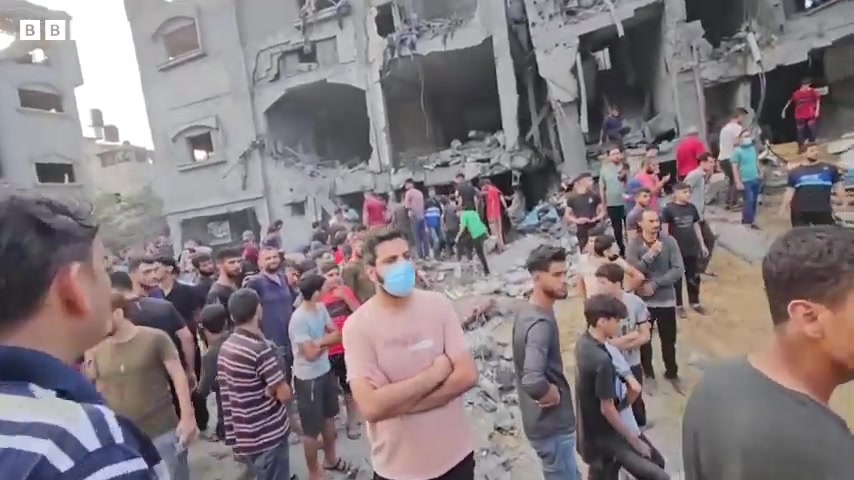
That crater is huge , an absolutely enormous hole surrounded by vast quantities of rubble and then homes and buildings around there that have been obviously severely damaged either in the course of uh , this incident or perhaps , uh , over the course of the last three weeks .
Baia , in case viewers are wondering , is the largest of the refugee camps in the Gaza Strip , home to around 115 120,000 people before this war began , packed into an area of about 1.5 square kilometres .
It's not tents , it's it's buildings that have been there for decades and tightly packed streets , and we think , judging by the number of people who are there looking in the rubble to try and find bodies and survivors .
There are still hundreds , maybe thousands of people still in the area , despite days and days of Israeli warnings for people to leave northern Gaza .

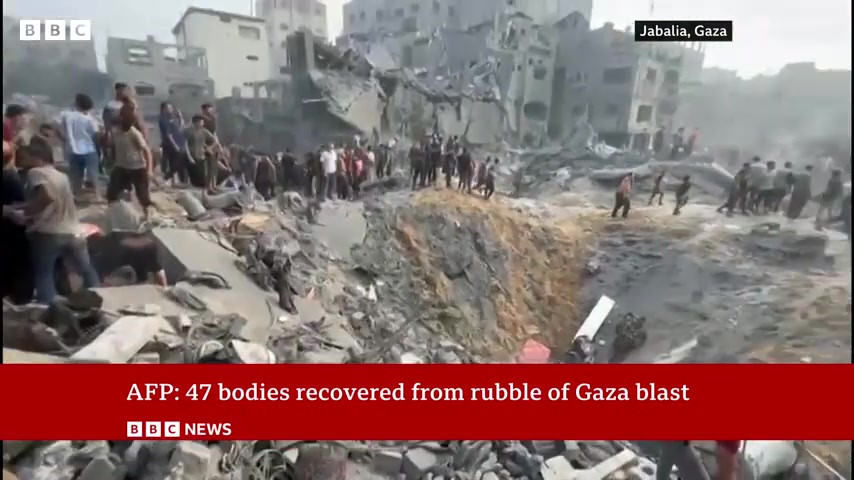
So it is likely that any airstrike on Jabalia Uh and this does appear to be an airstrike .
That kind of crater is really only consistent with a large munition dropped from the air .
Then it is almost inevitable that large numbers of civilians who have chosen , uh , to stay in the North will have been caught up in this .
That that figure of around 50 which , uh , is the number counted by journalists on the scene from Agence France Press That appears to be a AAA .
Uh , the minimum number of people caught up in this obviously huge explosion .
Paul , you were mentioning some of the geography of the Gaza Strip .
But over the last week and more , we've heard from the Israelis urging people ordering people to leave the north to go to the south south of the Wadi Gaza .
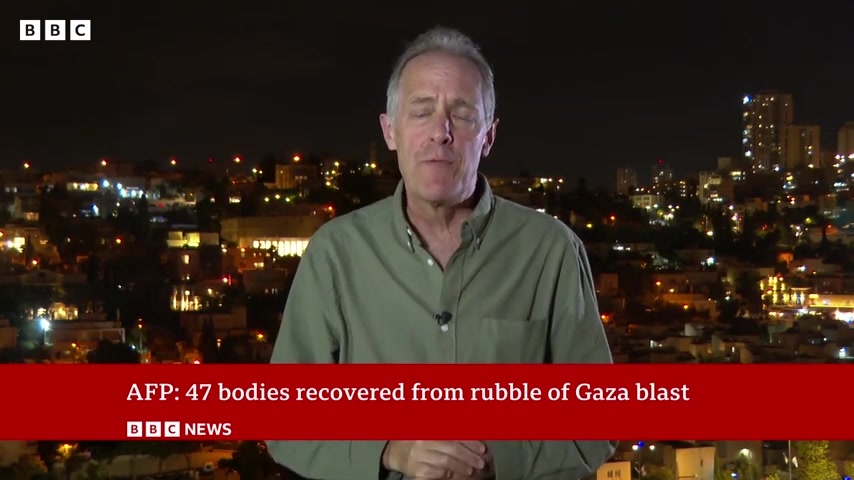
Just tell us a little more about where this camp is within that sort of geography north south and this line that the Israelis have talked about Yes , So Jabalia is north of Gaza City , so it's between Gaza City and the border fence with Israel , so it is not far from the kind .
The areas where Israeli forces have been pushing in on the ground .
They're not there yet .
They haven't reached those really densely populated areas yet , but they are gradually pushing forward on a number of areas in the north .
At the same time , we've seen the movement of Israeli forces south of Gaza City closer to Wadi Gaza , in what looks like an attempt to cut off Gaza City from the rest of the Gaza Strip .
That would be entirely consistent with the messaging that we've been hearing from the Israelis really since this war began three weeks ago , which is to try and tell everybody to move south of that line .
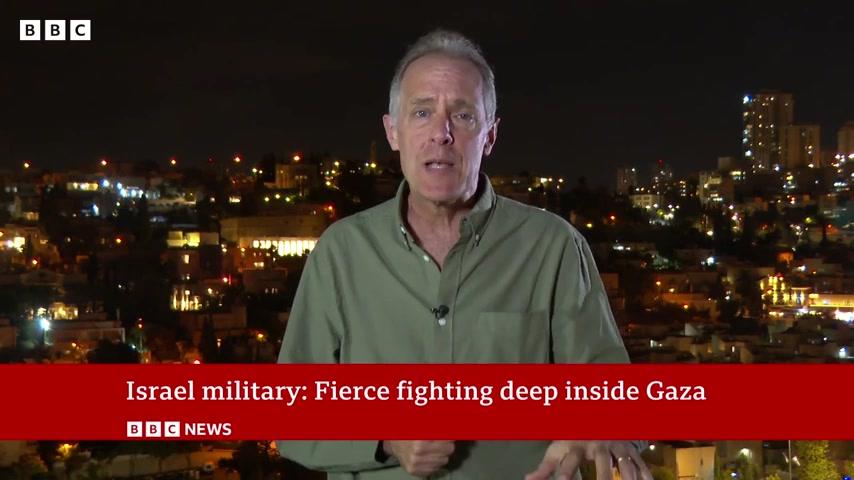
They , the Israelis , feel that they have a lot that they need to achieve in the wider Gaza City area , that that is where many Hamas fighters will be located .
That is where a lot of the , uh , bunkers and tunnels that we've heard the Israelis talking about a great deal and over the past few weeks , that's where all of that is located .
And so I think it is likely that as the days go by , more and more focus will be on this very , very densely populated area .
Um , what we don't know is how many people civilians remain in in that area .
We do know that there are thousands of people sheltering at Shifa Hospital , where the Israelis allege that Hamas has bunkers underneath .
We know of thousands of people sheltering at the Al Quds Hospital in another part of Gaza City .

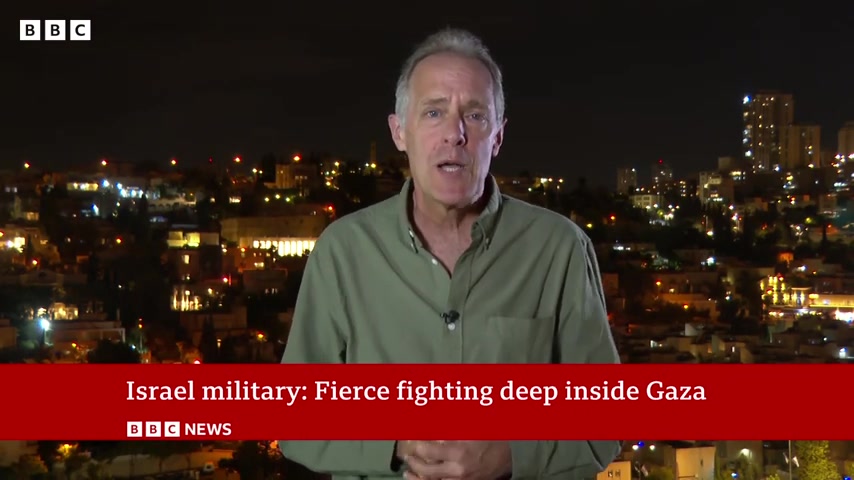
And there are UN schools and medical facilities dotted about this entire area where people are still sheltering so that it is safe to assume that there are still many , many thousands of people who run the risk of being trapped in Gaza at the very moment when the Israelis turn their attention to it on the ground .
Only this time , yesterday or around this time we heard Benjamin Netanyahu absolutely adamant there would be no ceasefire .
It's interesting .
Just in the last couple of hours , the US secretary of state , Antony Blinken , has said humanitarian pauses must be considered in Gaza at he was talking to a Senate hearing .
But even that even a pause looks really unlikely at the moment , doesn't it ?
I think it does .
And actually a pause will not even affect Gaza City at all .
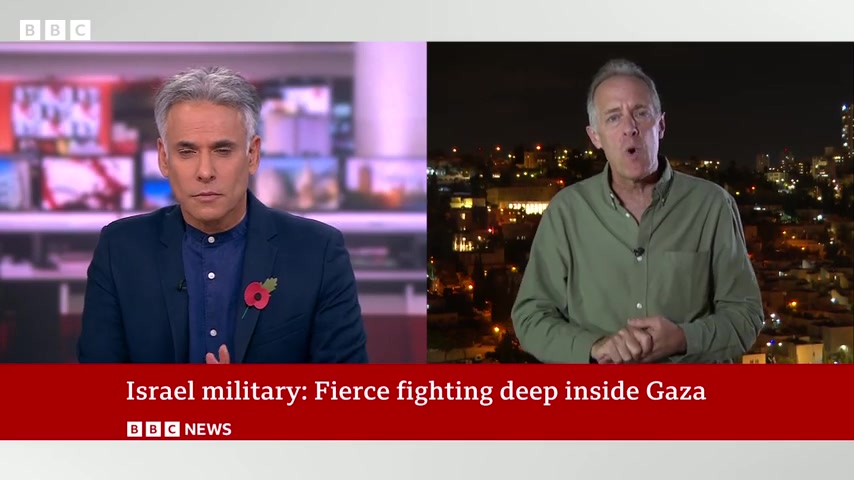
The Israelis have made it clear that nothing that goes into Gaza , no aid that goes into Gaza , will go north of that Wadi Gaza line that for the Israelis is absolutely essential .
They're happy for aid to go to the South , to the area where many , many hundreds of thousands of people have fled and are now sheltering some of them in tents .
But even there , the aid that is managing to get across the border from Egypt is just a tiny fraction of what is needed .
We have heard American officials and Israeli officials talking in the last couple of days about increasing the number of trucks that go across the border up to around 100 .
That would be a start , but we haven't got to that point yet .
We haven't seen that number of trucks going in on any single day , and even if they were to get in , it would be pretty challenging for the aid agencies to address the needs of those people who are huddled in the south desperately in need of assistance .
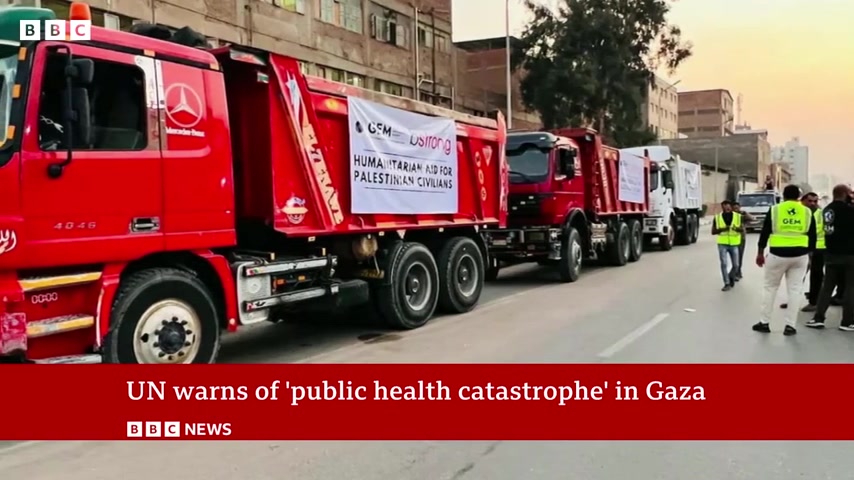
But as for the North and anyone north of Wadi Gaza , they are on their own .

Are you looking for a way to reach a wider audience and get more views on your videos?
Our innovative video to text transcribing service can help you do just that.
We provide accurate transcriptions of your videos along with visual content that will help you attract new viewers and keep them engaged. Plus, our data analytics and ad campaign tools can help you monetize your content and maximize your revenue.
Let's partner up and take your video content to the next level!
Contact us today to learn more.